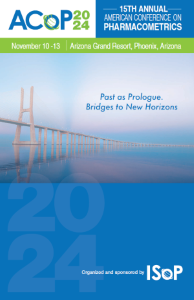Browse by Poster Title
Browse by Poster Title
- A
- T-024
- M-135
- T-131
- T-078
- M-061
- T-084
- T-088
- T-116
- T-071
- T-117
- T-013
- M-002
- M-126
- T-079
- M-089
- M-134
- M-030
- T-046
- W-138
- T-001
- T-103
- M-106
- T-056
- T-011
- T-018
- M-090
- T-066
- T-036
- T-070
- T-005
- M-039
- M-057
- T-062
- T-080
- W-009
- M-137
- T-129
- T-101
- M-025
- T-122
- M-110
- T-010
- M-100
- T-015
- T-067
- T-050
- M-073
- M-017
- M-064
- T-026
- M-072
- M-011
- M-028
- M-014
- M-136
- T-033
- M-068
- M-056
- T-044
- M-032
- M-008
- M-052
- T-099
- M-130
- W-033
- T-104
- M-099
- M-079
- T-043
- T-063
- M-109
- T-060
- M-006
- T-068
- W-077
- T-029
- T-048
- T-017
- W-006
- T-112
- T-081
- T-128
- T-083
- T-115
- M-116
- M-083
- T-120
- T-069
- M-026
- M-097
- M-129
- B
- M-033
- T-100
- T-125
- M-029
- T-041
- T-073
- T-016
- T-049
- C
- M-101
- W-134
- W-063
- T-094
- M-093
- W-091
- W-079
- W-045
- M-009
- W-109
- W-064
- W-106
- T-022
- W-080
- W-087
- T-108
- T-031
- T-107
- W-070
- W-055
- W-114
- M-012
- W-099
- T-023
- M-005
- M-127
- M-111
- D
- W-011
- M-065
- T-092
- W-139
- M-003
- M-031
- M-046
- W-028
- W-038
- T-119
- W-101
- M-013
- M-080
- T-086
- W-053
- W-004
- T-009
- T-130
- M-001
- W-141
- M-049
- M-020
- W-068
- W-002
- W-122
- E
- W-043
- W-015
- W-078
- W-054
- T-075
- M-142
- M-023
- M-103
- W-037
- M-112
- M-104
- W-118
- M-125
- W-069
- M-041
- W-084
- M-074
- T-058
- W-074
- W-049
- M-050
- T-037
- T-072
- W-040
- W-065
- F
- W-059
- T-091
- T-047
- W-125
- W-129
- M-091
- G
- W-067
- T-105
- W-136
- H
- M-108
- T-040
- W-052
- T-057
- I
- T-035
- M-043
- M-055
- W-137
- M-060
- T-061
- T-132
- W-092
- W-108
- W-020
- W-041
- W-105
- T-006
- T-027
- T-089
- M-092
- W-017
- T-096
- T-134
- M-016
- M-082
- W-093
- T-030
- W-076
- M-015
- W-048
- J
- T-121
- K
- M-037
- M-038
- L
- M-007
- M-075
- W-003
- W-115
- W-001
- W-021
- W-032
- M-139
- T-014
- W-133
- M
- W-071
- W-102
- M-004
- M-071
- T-051
- W-107
- W-131
- T-137
- W-047
- M-024
- T-025
- M-076
- M-044
- M-048
- T-045
- M-070
- M-087
- T-097
- T-109
- T-141
- W-051
- W-014
- W-083
- M-027
- M-042
- W-121
- T-053
- M-088
- W-104
- W-089
- T-138
- T-085
- W-010
- T-140
- T-095
- T-052
- T-123
- N
- M-140
- T-032
- W-018
- M-040
- O
- M-113
- W-023
- T-082
- M-066
- W-057
- M-122
- P
- W-034
- M-118
- W-013
- M-085
- M-058
- T-064
- W-140
- W-111
- M-036
- W-100
- W-135
- W-019
- W-095
- M-059
- W-090
- W-066
- M-131
- W-029
- W-130
- M-124
- M-107
- M-035
- W-110
- M-053
- T-142
- M-078
- T-133
- W-088
- W-117
- T-028
- T-012
- M-138
- W-044
- M-141
- M-086
- W-027
- M-119
- W-025
- W-123
- M-077
- M-128
- W-082
- T-118
- W-113
- M-115
- M-081
- W-046
- W-026
- W-127
- W-050
- T-059
- M-018
- M-095
- T-098
- W-042
- W-132
- M-034
- M-098
- W-075
- W-094
- M-063
- T-076
- M-096
- T-139
- W-142
- M-102
- M-121
- M-132
- W-128
- M-084
- W-126
- T-087
- T-007
- M-047
- W-056
- W-119
- W-030
- T-055
- W-036
- T-135
- M-054
- T-093
- W-097
- W-086
- W-103
- W-039
- M-019
- Q
- T-113
- W-058
- T-126
- W-081
- M-010
- T-008
- W-060
- T-077
- W-061
- W-120
- W-096
- M-120
- R
- W-124
- T-102
- W-012
- T-002
- W-016
- T-074
- W-098
- S
- T-114
- W-031
- M-117
- W-062
- T-021
- M-105
- T-019
- T-106
- W-007
- T-110
- W-022
- W-116
- W-024
- M-067
- M-123
- M-062
- T-127
- T-039
- W-035
- T
- T-054
- M-051
- W-085
- T-038
- W-008
- M-021
- M-022
- T-034
- T-124
- U
- T-136
- W-072
- W-112
- T-042
- M-133
- W-005
- V
- M-114
- M-045
- W
- T-065
- T-090
- X
- W-073
- Z
- T-020

